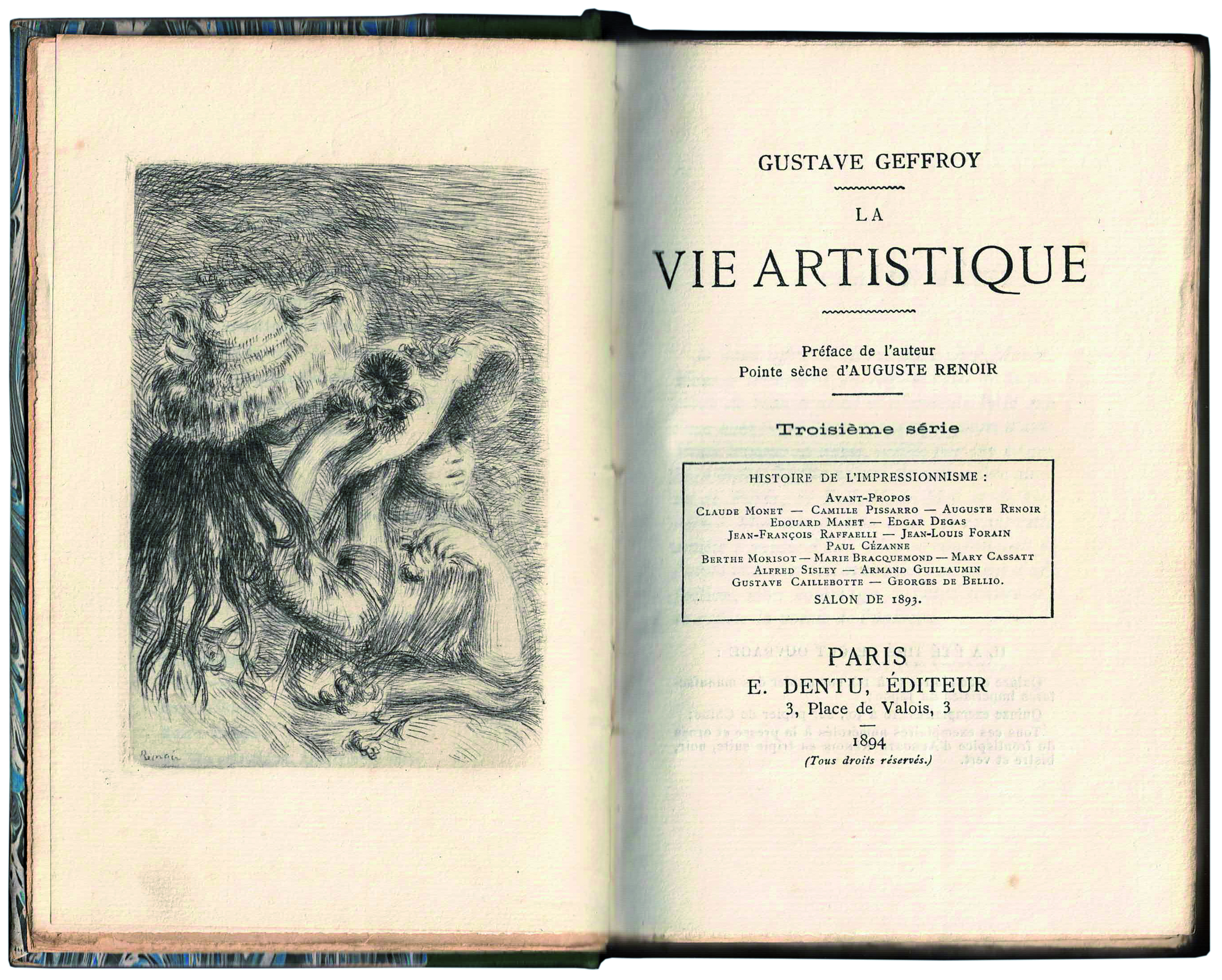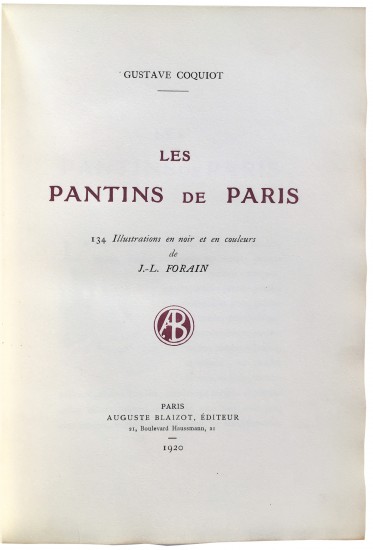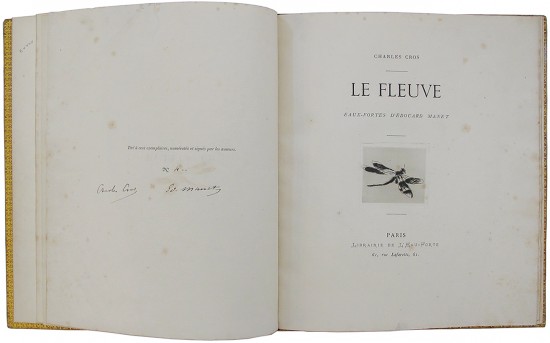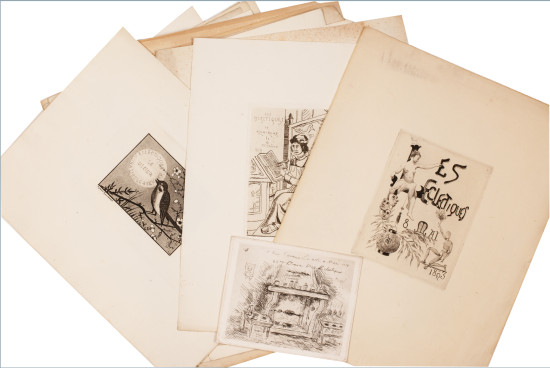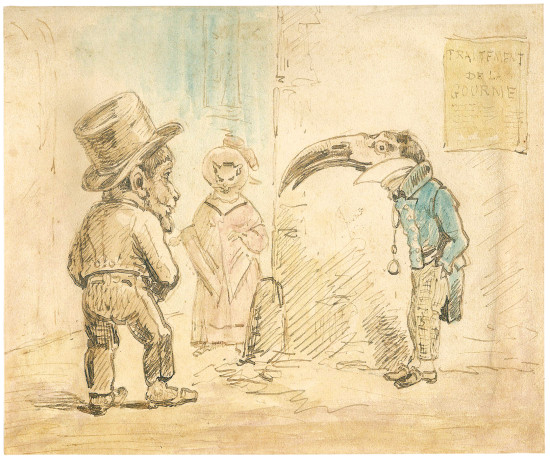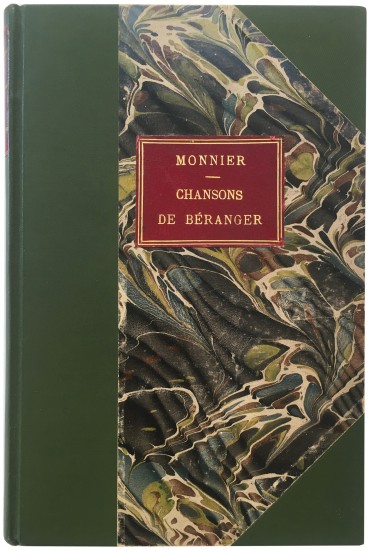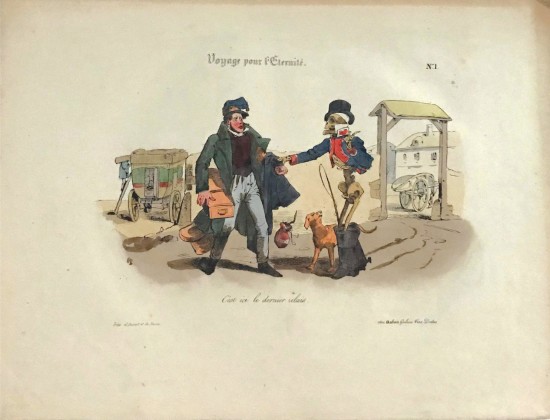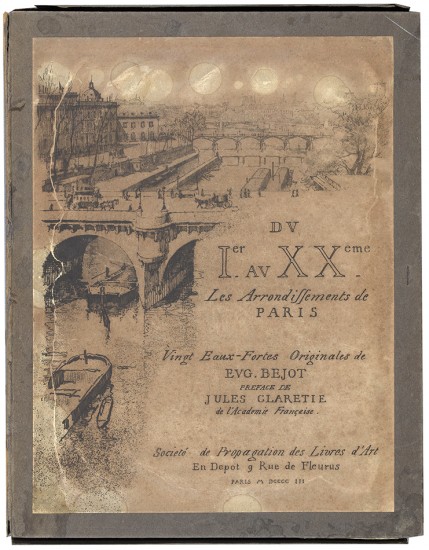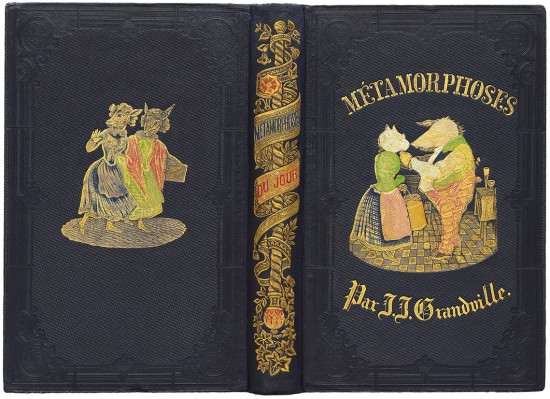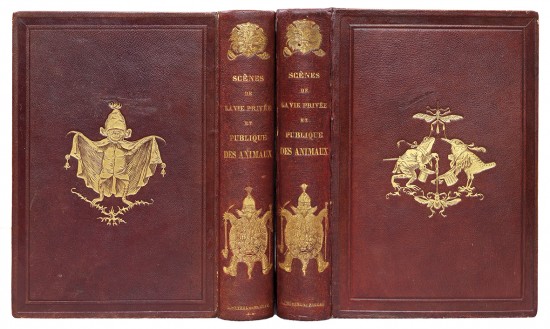La Vie Artistique. Préface d'Edmond de Goncourt
Geffroy, Gustave
Paris. Dentu (after 1897, Floury). 1892–1903
Jean Ajalbert's set presented to him by the author Gustave Geffroy.
Geffroy's evocative presentations, evidence for his profound friendship and respect for Ajalbert, differ in each volume (those for the final three are matching) although the sentiments are similar, with the most effusive appearing in the first two vols.:
I - 'A mon cher Jean Ajalbert / poète de mon esprit et ami de / mon coeur / Gustave Geffroy';
II - 'A mon cher p'tit, le doux (?) poète / et violent avocat: Jean Ajalbert / de tout mon coeur d'ami / Gustave Geffroy';
The first volume also includes a letter from Geffroy, a bifolium of smooth paper (138 x 108 mm) with Geffroy's manuscript recto and verso to the first leaf, addressed to Ajalbert and his son. Among details such as a desire that Ajalbert visit him when he comes to Paris is news of Geffroy's health ('Ma santé continue à se lézarder. J'entends distinctement les craquements.') and of the death of Eugène Carrière in agony (' ... une des plus tristes choses, la plus triste même, la plus sinistre, de ma vie ... '). As for the presentations in the volumes, Geffroy ends familiarly and affectionately 'affectueusement à toi et ton gosse', addressing Ajalbert in his 'Auvergne de neige'.
Jean Ajalbert was a poet, author and journalist publishing in the 'Revue Independante', 'La Pleiade', 'L'Humanité' and a major contributor to the Dreyfusard press. The front pastedowns of the volumes feature Ajalbert's circular woodcut bookplate with his initials flanking an image of Mount Fuji and initialled 'MB'.
La Vie Artistique was one of the most influential of the late-nineteenth century art periodicals. Geffroy was a friend and one of the earliest supporters of the Impressionists. He was a founding member of the Academie Goncourt and was, in Edmond de Goncourt's words, 'dispensateur d'une culture nouvelle.' He writes about the artists he liked and admired: Manet, Carrière, Rodin, Pissarro, Raffaelli, Whistler, Moreau, Puvis de Chavannes, Sisley, Forain, Cassatt, etc. The testaments he published on Impressionism constitute one of the major sources of the history of art of the period.
'De fait ses comtes rendus d'expositions et ses études d'artistes mettent en valeur avec une étonnante pénetration des talents aussi divers que ceux de Gustave Moreau, de Puvis de Chavannes, de Maurice Denis, de Rude...' (D. B. F.).
Geffroy's evocative presentations, evidence for his profound friendship and respect for Ajalbert, differ in each volume (those for the final three are matching) although the sentiments are similar, with the most effusive appearing in the first two vols.:
I - 'A mon cher Jean Ajalbert / poète de mon esprit et ami de / mon coeur / Gustave Geffroy';
II - 'A mon cher p'tit, le doux (?) poète / et violent avocat: Jean Ajalbert / de tout mon coeur d'ami / Gustave Geffroy';
The first volume also includes a letter from Geffroy, a bifolium of smooth paper (138 x 108 mm) with Geffroy's manuscript recto and verso to the first leaf, addressed to Ajalbert and his son. Among details such as a desire that Ajalbert visit him when he comes to Paris is news of Geffroy's health ('Ma santé continue à se lézarder. J'entends distinctement les craquements.') and of the death of Eugène Carrière in agony (' ... une des plus tristes choses, la plus triste même, la plus sinistre, de ma vie ... '). As for the presentations in the volumes, Geffroy ends familiarly and affectionately 'affectueusement à toi et ton gosse', addressing Ajalbert in his 'Auvergne de neige'.
Jean Ajalbert was a poet, author and journalist publishing in the 'Revue Independante', 'La Pleiade', 'L'Humanité' and a major contributor to the Dreyfusard press. The front pastedowns of the volumes feature Ajalbert's circular woodcut bookplate with his initials flanking an image of Mount Fuji and initialled 'MB'.
La Vie Artistique was one of the most influential of the late-nineteenth century art periodicals. Geffroy was a friend and one of the earliest supporters of the Impressionists. He was a founding member of the Academie Goncourt and was, in Edmond de Goncourt's words, 'dispensateur d'une culture nouvelle.' He writes about the artists he liked and admired: Manet, Carrière, Rodin, Pissarro, Raffaelli, Whistler, Moreau, Puvis de Chavannes, Sisley, Forain, Cassatt, etc. The testaments he published on Impressionism constitute one of the major sources of the history of art of the period.
'De fait ses comtes rendus d'expositions et ses études d'artistes mettent en valeur avec une étonnante pénetration des talents aussi divers que ceux de Gustave Moreau, de Puvis de Chavannes, de Maurice Denis, de Rude...' (D. B. F.).
pp. xvi, 375; 396; xx, 395; xviii, 334; 408; 462; 368; 483. 8 vols. 8vo. (180 x 118 mm). Original etched frontispiece to each volume by Carrière, Rodin, Renoir, Raffaelli, Fantin-Latour (lithograph on chine), Pissarro, Vierge, and Willette. Contemporary green cloth-backed marbled boards (vols. 1 - 7), leather labels with gilt titles and volume nos. to spines, original publisher's printed wrappers with titles to front covers in red and black, publisher's advertisements to rear, uncut, vol. 8 in original publisher's printed wrappers as issued.
#48339
